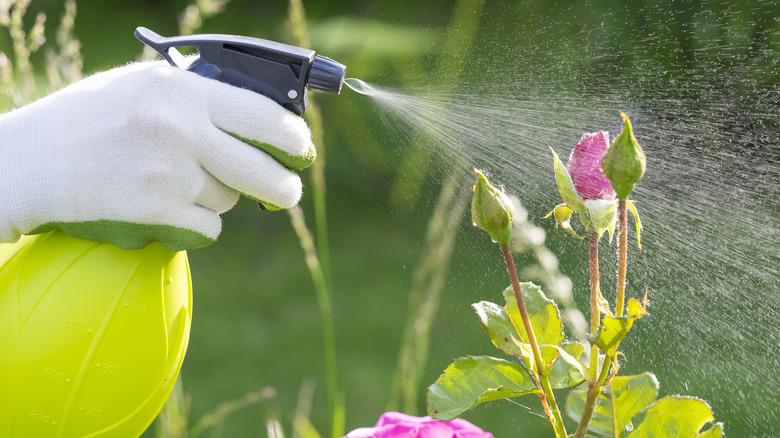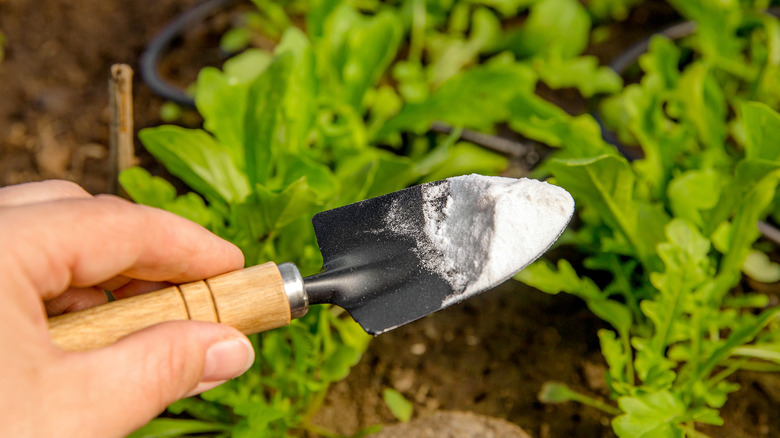Thanks to their perfumed, quaint blooms, rose bushes (Rosa spp.) have collected a host of admirers, from gardeners to fungal spores. As the wet spring months melt into the summer’s sweltering heat, Diplocarpon rosae, a fungal pathogen, troubles roses. The black spot disease marks their stems and foliage in ½-inch wide, globular black spots with stringy margins. It doesn’t spare the new wood, leaving the stems mottled with crooked, fuchsia-colored patterns. When left unattended for extended periods in humid weather, this voracious spreader causes complete defoliation, poor blooms, and a loss of vigor in roses, especially in miniature varieties. Fortunately, you can give the spores a cause for pause by bringing out baking soda from your kitchen pantry.
Being alkaline, sodium bicarbonate turns the leafy surface basic, depriving the fungus of the conducive, acidic environment necessary for germination. This checks the black spot disease’s advances, diminishing its severity significantly. However, remember that baking soda works as a preventative rather than a curative measure, limiting its use to the initial phases of the disease.
Applying baking soda to roses

Since it’s near-impossible to eradicate the black spot disease once it begins spreading, take action when you notice its signs. Start by pulling and cutting the infected foliage from its abscission point (located close to the stem). Avoid using garden shears because they’re inefficient and likely to leave spores behind. Next, combine 1 quart of water with 1 teaspoon of baking soda in a spray bottle and spritz it liberally on the standing foliage. The alkali concoction will function as a fungistatic, impeding the spores from incubating and colonizing the rose plants.
Although the diluted baking soda solution only works on mild infestations, it can be blended with horticultural oil for better results. This is because the oil improves the solution’s effectiveness and adherence to the foliage. To do so, mix 3 tablespoons of horticultural oil with 1½ tablespoons of baking soda in 1 gallon of water (although vegetable oils work, too). Shake well and coat the foliage profusely. Reapply at weekly or fortnightly intervals throughout the growth season. Also, respray after rain.
Some rose aficionados propose adding surfactants, like dishwashing soap, to the solution. However, soaps can injure the plants, especially if their dosage exceeds 1 tablespoon per gallon. So stick to insecticidal soap, which is less harmful, staying between ¼ and ½ teaspoon per gallon.
Caveats to using baking soda

Although baking soda is eco-friendly, it can be phytotoxic, particularly if used in higher amounts (above 1%). This explains why some prefer using it early during the day or when the weather is cooler since the odds of foliar burn from sun exposure are considerably lower. Nevertheless, it’s best to test the soda cocktail in an inconspicuous area before spraying it all over your roses. In case it burns, substitute sodium bicarbonate for potassium or ammonium bicarbonate. This has the added advantage of enriching the soil with nitrogen and potassium.
That being said, baking soda may not work well on stems and lower leafy portions because it may seep down. This becomes problematic as the runoff accumulates in the soil, especially in water-stressed gardens where there’s no rain to flush it out. A 2024 Martínez-Cuenca, MR., et al. paper has highlighted that sodium buildup can stunt stem growth and obstruct iron uptake, causing chlorosis. Moreover, there’s an off chance of bicarbonate ions fusing with soil elements like magnesium and calcium, depriving roses of essential nutrients. Drip irrigation can also promote sodium buildup, assuming epidemic proportions in small rose gardens. So, to prevent the solution from backfiring, stop using the solution when you notice lackluster flowers or plant damage.



